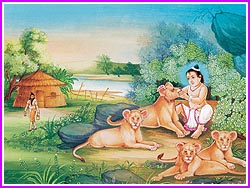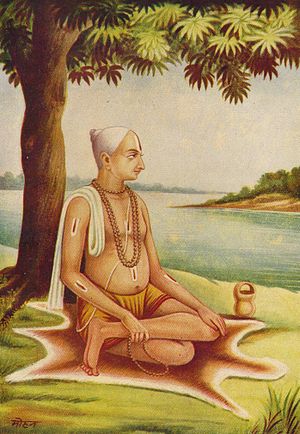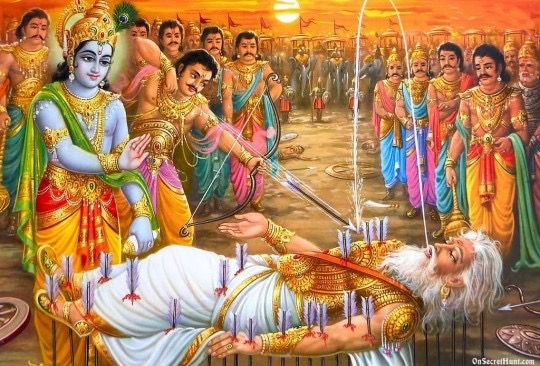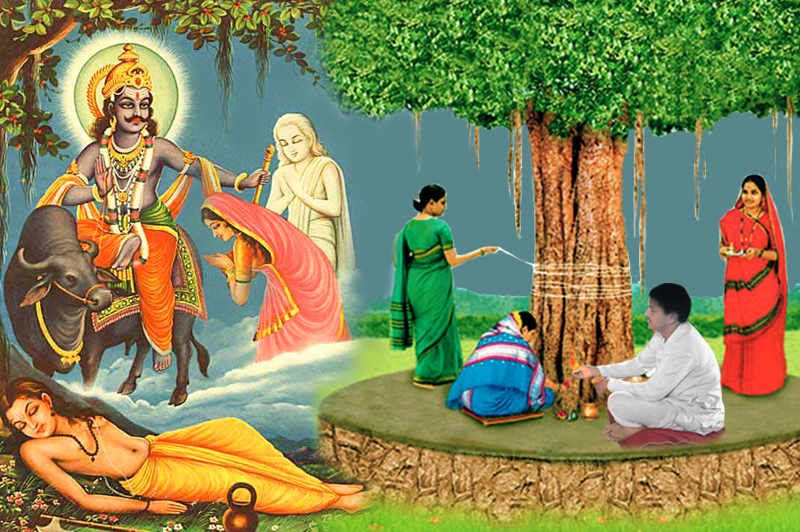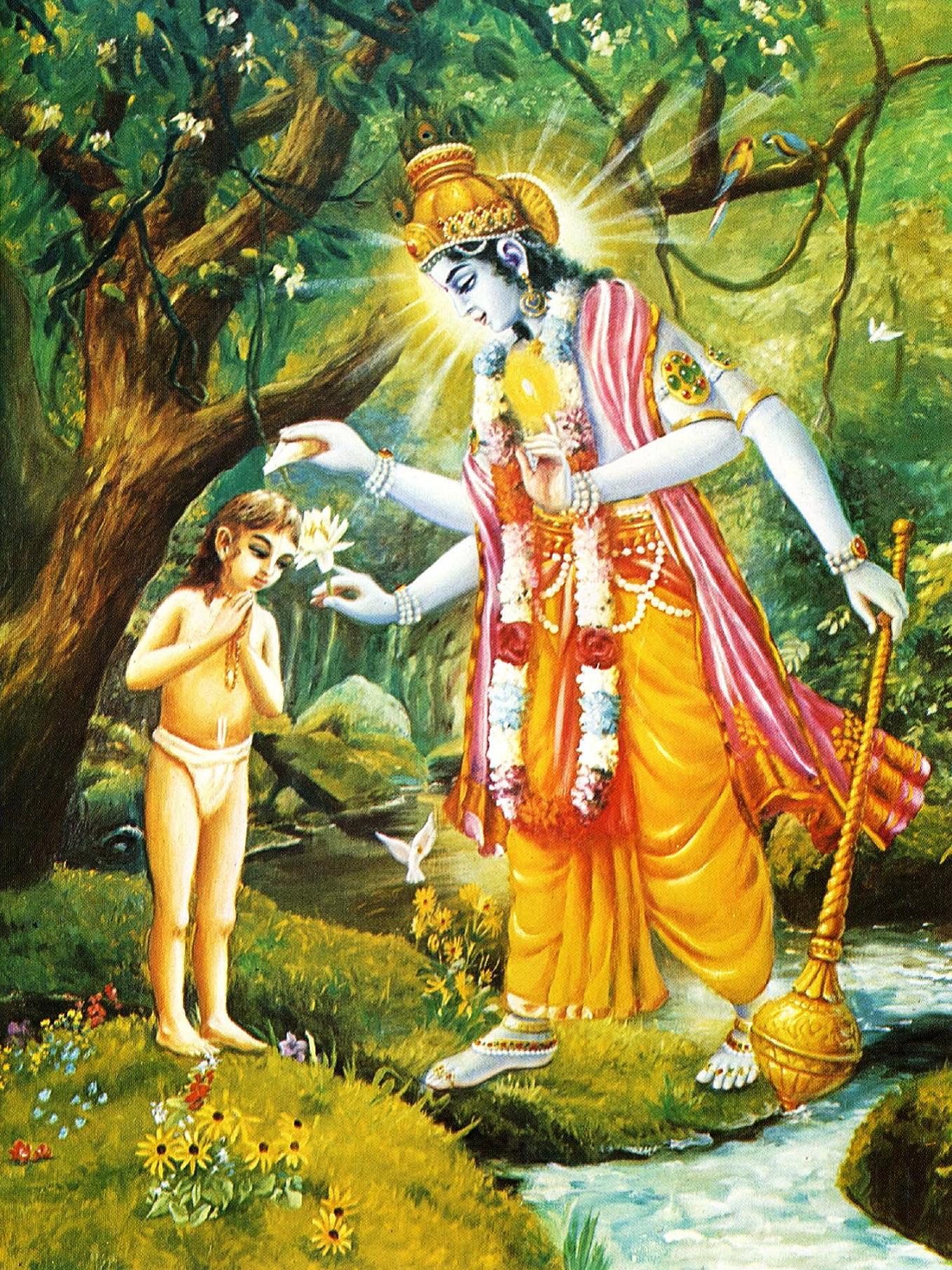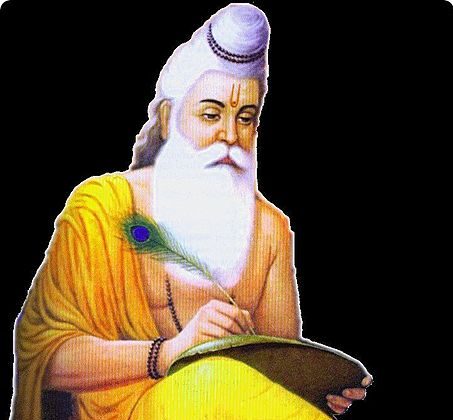Author – Awadhesh Sharma
Satyamev Jayate, Truth alone Triumphs, a part of the Mantra in the Mundak Upanishad, is the state motto of modern India. The text is inscribed in Devnagari script at the base of the Lion Capital of Ashok forming it the Indian national emblem.
Truth is God was the firm belief of Mahatma Gandhi, which he comprehended after years of analysis of the relationship between Truth and God. He called his freedom movement Satyagrah or Insistence on Truth.
Ancient Indian texts assert, “The earth is supported by the power of Truth. It is the power of Truth that makes the sun shine and the wind blow. All things rest upon truth.” Similar statements are found throughout Hindu scriptures.
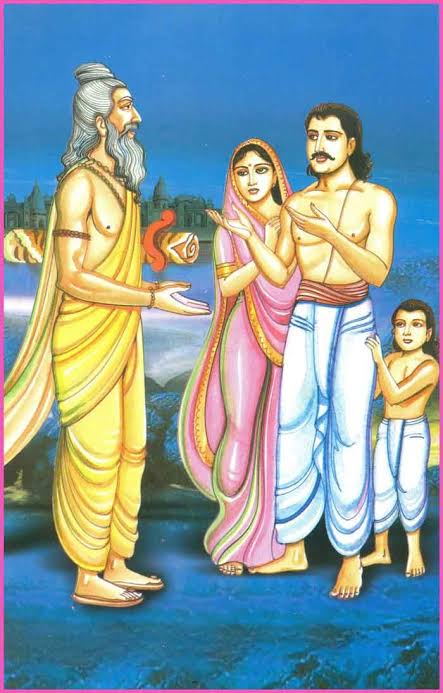
Truth has been highly esteemed in Hinduism throughout different eras of its evolution. Numerous stories and legends highlight the extent to which people subjected themselves to hardship and pain for upholding the truth in their life. Raja Harishchnadra’s story is one of the most remarkable legends demonstrating the resolve of a person to be truthful to his words. His name has become a proverbial term that points to someone who speaks truth even if that truth may be harmful to him or to his close relatives or friends.
His legend appears in several texts including the Aitarey Brahaman, Mahabharat, Ramayan, Bhagavad Puran, Devi Bhagavad Puran and Markandey Puran. The details vary from one narrative to another. The Markandey Puran version of the legend contains a comprehensive description of events in the life of the truthful king.
Harishchandra was born in the Ikshvaku dynasty, the same dynasty in which lord Ram was born in a later age. His father was Satyavrat, a legendry king who became famous as Trishanku.
After his father, Harishchandra became the king of Koshal kingdom with its capital in Ayodhya. He was married to Shaivya also known as Taramati. They had a young son named Rohitashva. Harishchandra was a mighty king, an emperor whose authority was accepted by all other kings. He was kind, generous and just. He treated his subject like his own child. He was truthful to his words beyond measure.
Once Indra, the king of deities, convened a meeting in his assembly hall to discuss affairs of the world. Vasishtha and Vishvamitra were present in the meeting as representatives of the earth. Vasishtha was the royal priest of Ikshvaku dynasty kings. He was a well-recognised Brahmarishi, a prestigious rank in spiritual hierarchy. Vishvamitra was originally a Kshatriya king but became a Brahmin through his penance and spiritual feats. There was an ongoing rivalry between the two great seers of their time.
During the meeting in heaven, Indra asked whether there was a king on the earth who was powerful, just and truthful to his words. Vasishtha responded and told the assembly that Harishchandra the king of Ayodhya was such a king. All other kings accepted his authority. His subjects loved him like their parents. He performed religious sacrifices and offered charities to Brahmins and worthy recipients. He was truthful to his words in every respect.
Vishvamitra disliked Vasishtha’s admiration of Harishchandra and objected to his assessment. He informed the gathering that he would prove Vasishtha wrong. Vishvamitra returned to his hermitage on earth and started designing deceits to prove his statement whilst Vasishtha went to perform his penance.
Some time later, Harishchandra performed a Yagya, royal sacrifice that demonstrated his splendour and regal status. At that time Vishvamitra arrived at his court and asked for donation. Traditionally, it was considered a duty of kings to satisfy Brahmins with gifts. The king happily agreed to his request and ordered his treasurer to give the entreated amount. When the amount was to be disbursed, Vishvamitra left the court stating that let the treasury hold the amount in a trust and he would collect it later.
After this event, once Harishchandra went to the forest on a hunting expedition. There he heard distressing cries of women. The king along with his escorts followed the direction of the wailing and ultimately arrived at a hermitage, where Vishvamitra was sitting in a meditative position. He had created the illusion of women’s cry. He became angry with the king for disturbing his meditation. The king apologised for the incidence and promised to repair the damage caused by his action at any cost. Vishvamitra took advantage of his statement and demanded his kingdom as reparation. The king willingly agreed to his demand and returned to the palace.
Next day, Vishvamitra arrived at the king’s court and asked him to handover his kingdom as promised. The king complied. Vishvamitra then instructed him to leave his kingdom along with his wife and son. They were allowed to take only whatever they had on their body. Harishchandra’s subjects objected to this mistreatment and suggested him to decline the transfer of the kingdom but the king opted to honour his words and left the kingdom.
Further, Vishvamitra demanded the amount that was donated to him earlier and held with the king in his treasury. Now the treasury was also handed over to Vishvamitra as a part of the kingdom. Despite his precarious situation, the king agreed to pay him the agreed amount. Vishvamitra allowed him one month’s time to pay.
Harishchandra along with his wife and son roamed in the forest and survived on roots and fruits. They arrived at Varanasi where they bathed in the River Ganga and worshipped deities in temples. The allotted time to pay the debt was nearing. Vishvamitra appeared before him and demanded his money. Harishchandra had not anything left to pay his debt. He decided to sell himself to get money but his wife objected. Shaivya insisted that she be sold advising him to recover her when he had enough money.
Harishchandra auctioned his wife and son in an open market place. A Brahmin in Varanasi bought them as a domestic servant to help his wife. The Brahmin paid him a good amount, which he gave to Vishvamitra. Vishvamitra was yet not satisfied and demanded more. Vishvamitra was willing to free the king from his debt, if Harishchandra declared that he was not liable to pay. Vishvamitra wished to lead the king to falsehood to prove his point that Harishchandra was not truthful as described by Vasishtha. However, Harishchandra was determined to pay the debt in full and did not succumb to falsehood.
When a few hours were left before the set time for payment of debt, Harishchandra decided to sell himself. He announced his readiness to be a slave for a certain amount that will meet Vishvamitra’s demand. A rich person of lowest social hierarchy known as Chandal expressed his willingness to buy him and pay the requested amount. He was the master of the cremation ground of the city and also an executioner. He was looking for a person to work for him. Harishchandra was unwilling to sell himself to such a person. Vishvamitra appeared before him at that moment and demanded the owing amount. Harishchandra begged Vishvamitra to accept him as his slave to save him from becoming a slave of Chandal. Vishvamitra accepted him as a slave and then ordered Harishchandra, his newly obtained slave, to serve the Chandal, who paid the huge amount of money to Vishvamitra, satisfying his conditions.
The new owner explained to Harishchandra his duties. He was assigned to guard the cremation ground from intruders and collect taxes from all those who came there to cremate corpses. His duty also included execution of criminals condemned to death by the court. The collected tax was divided amongst the king of the kingdom, the owner of the cremation ground and the person collecting the tax. Harishchandra as a slave performed his duties diligently. In due course, his physical appearance changed and he looked like a Chandal.
He used to reminisce his past life as a king of Ayodhya with the queen and beautiful son Rohitashva. He thought about the appalling conditions in which his wife and son had been sold. He had no information about their whereabouts or wellbeing anymore.
Shaivya and child Rohitashva served their owner who was very cruel to them. The owner and his wife treated them poorly, and did not give enough food, clothes or shelter. They coerced them to work day and night. The child was regularly sent to collect firewood from the forest. Once as usual Rohitashva went to the forest to bring firewood but he did not return by the evening. Shaivya became alarmed about his safety. He asked the owner to allow her to go and find her son.
Her owner permitted her to go and look for her son only after she had completed all the domestic chores. It was late evening when she went and found her son lying dead on the floor of the forest. A snake had bitten him. She was devastated by this tragedy. No one was present to help her.
She realised her responsibility to perform the last rites of her son. She carried Rohitashva’s corpse to the cremation ground. She had no money to buy wood for cremating the corpse. She tried to collect some unburnt wood at the site to make a pyre. At that moment Harishchandra, the guard of the cremation ground, appeared before her. The woman told her story to the guard who sensed that she could be his wife. The guard sympathised with her but he did not deviate from his duty. He demanded the tax. He told her that he could forgo his own share of the tax but she had to pay the king’s and owner’s shares.
When she expressed inability to pay any tax, Harishchandra noticed her Mangal Sutra, which confirmed his suspicion that she was his wife. She also realised that the guard demanding money was her husband. Shaivya told him that the dead corpse is of their only son Rohitashva’s and begged him to allow her to cremate their son. Harishchandra could not cheat his master and suggested she return to her master and ask for money to cover the cost of cremation.
Shaivya left the corpse at the cremation ground and went to beg for money from her master. On the way a stranger met her and asked about her mission. When she explained, the stranger was moved by her pitiable situation and gave her a pouch of money and went away. In the meantime, police came looking for the thief who had stolen money from the royal treasury. They noticed Shaivya with the moneybag and arrested her.
They brought her to the royal court, which sentenced her to death assuming that she stole the money. She was brought to the execution ground for sentencing. Harishchandra who was guarding the corpse of his son was ordered by the master to perform the execution. When he saw the condemned woman, he recognised her and lamented. However, to obey the order, he raised his axe to sever her head.
At that moment Vishvamitra appeared and asked him to disobey his master’s command. Harishchandra, remaining truthful to his duty to obey his master, did not heed Vishvamitra’s advice and proceeded to fulfil his task. Vishvamitra then forcibly held his hand from executing the woman.
Lord Indra, Brahma and other celestials appeared in the sky and praised Harishchandra’s dedication to truth. Vishvamitra accepted his defeat against Harishchandra’s resolve.
Vishvamitra revealed to Harishchandra the story behind his ordeals perpetuated by him. He endowed all his merits gained through long penance to Harishchandra. The Brahmin who bought his wife and son was Agnidev or fire god. The Chandal was Dharmaraj, also known as Yamraj, the lord of death.
Deities infused life in Rohitashva who was united with his parents. All three were restored to their previous positions. After ruling his kingdom for a long time Harishchandra attained a permanent position in the heaven.
The story of Raja Harishchandra has reminded generations of Indians the vital importance of the truth in their daily lives and actions, and continues to do so.

